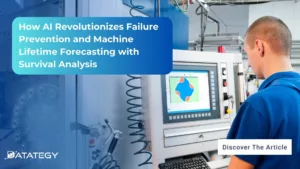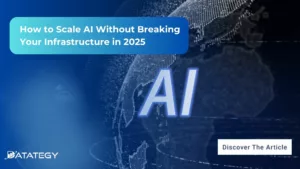Why AIOps Is Key to Cyber Threat Detection in Defense?...
Read MorepapAI integration in the clinical workflow
Table of Contents
ToggleArtificial intelligence is poised to transform the healthcare industry by improving clinical workflow. It will help doctors and researchers spot previously undetected patterns in patient health, provide real-time support, and give more precise information. Many hospitals are currently working to put artificial intelligence (AI) at the heart of their clinical workflows. One of the key benefits of AI-powered technologies is that they help hospitals overcome quality and productivity issues.
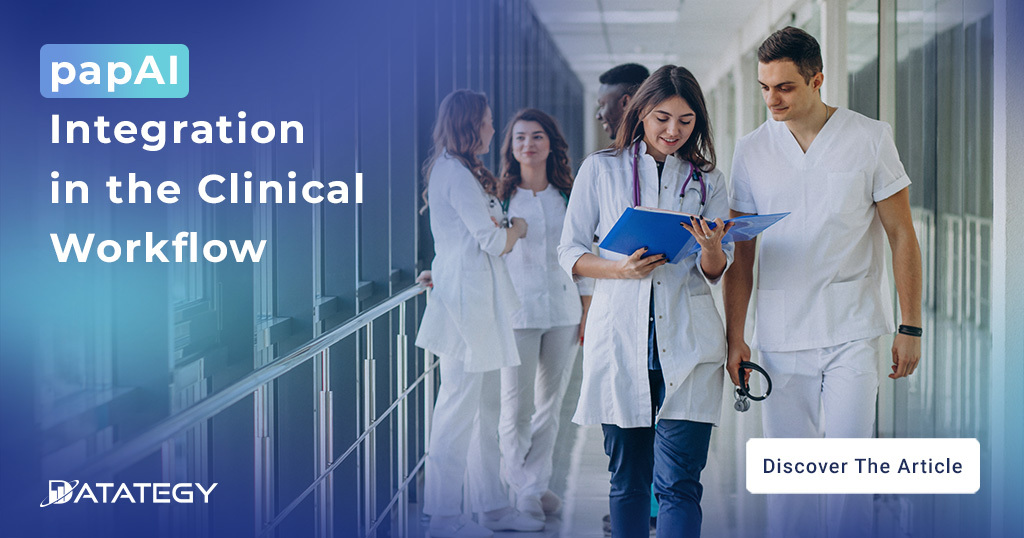
What does the term " Clinical workflow " mean ?
Clinical workflow is the process by which healthcare providers, patients and any other parties involved in the management of a patient’s care interact. The workflow mechanism has long been implemented to improve efficiency and quality of care. However, it took nearly two decades for computing power to catch up with clinical techniques and provide an efficient way for doctors to make use of their data. The advancement towards AI has enabled machines to assist clinicians in receiving a detailed insight about patients’ condition quickly, efficiently and accurately.log
Benefits of integrating papAI in clinical workflow
For the physician
-
Improve diagnostic accuracy and be confident in the decision making.
-
Reduce bias and standardize sample review therefore democratizing care.
-
Save time and increase availability time with the patient.
-
Reduce mental load thanks to AI assistance on repetitive and time-consuming tasks.
- The use of an accessible platform, with high explainability of the results instead of using several laborious, manual and frustrating tools with " black-box" effect.
For the patient
-
Reduction in missed or misdiagnosis and therefore a reduction in the likelihood of unnecessary surgery or procedures.
-
Effective treatment With a precise diagnosis clinicians are able to treat more effectively.
-
Less time waiting get the diagnosis and results faster.
- Overall, a better patient experience and more trust and personalization in the healthcare system.
In this use case, we aimed to determine the benefits of using papAI platform in clinical workflow by exploring “Covid-19 ICU Admission prediction”. As you know, physician and healthcare staff in general are always in need to have access to easy-to-use and intuitive interfaces to understand clearly the data they deal with and the results generated from its analysis. Thus introducing papAI, our solution to integrating explainable AI into the healthcare organization since you can create any DS workflow for your needs through our plateform.
1 - Importing and storing the Data
Before analysing the data, we need to collect them through different sources. Thanks to papAI’s multiple connectors, you can simply import from either your local machine or through external databases or APIs and stored into object type buckets without any restrictions of size or format to use into your project.
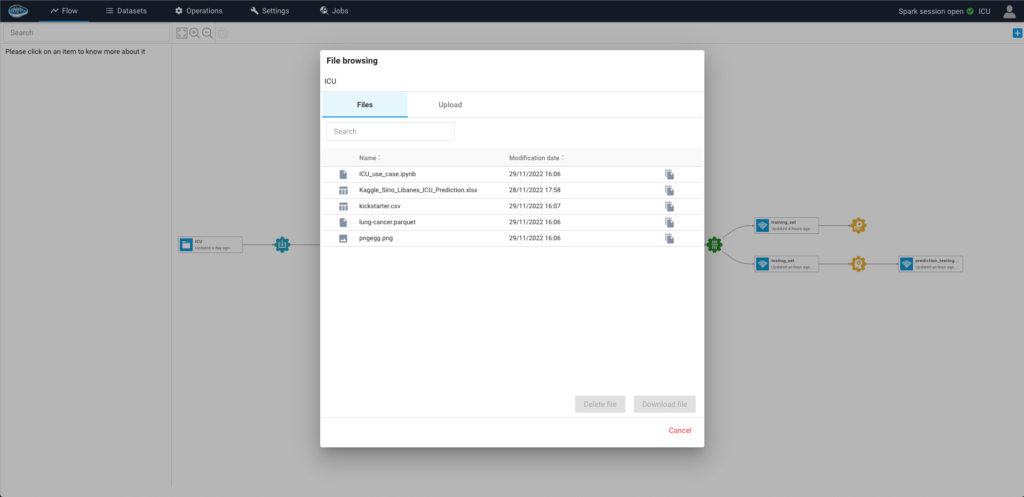
2 - Exploring the Data
You can also explore your data before assessing the preprocessing steps of your imported datasets through our integrated statistics and data visualization modules; you can then explore more in-depth your data through different displays.
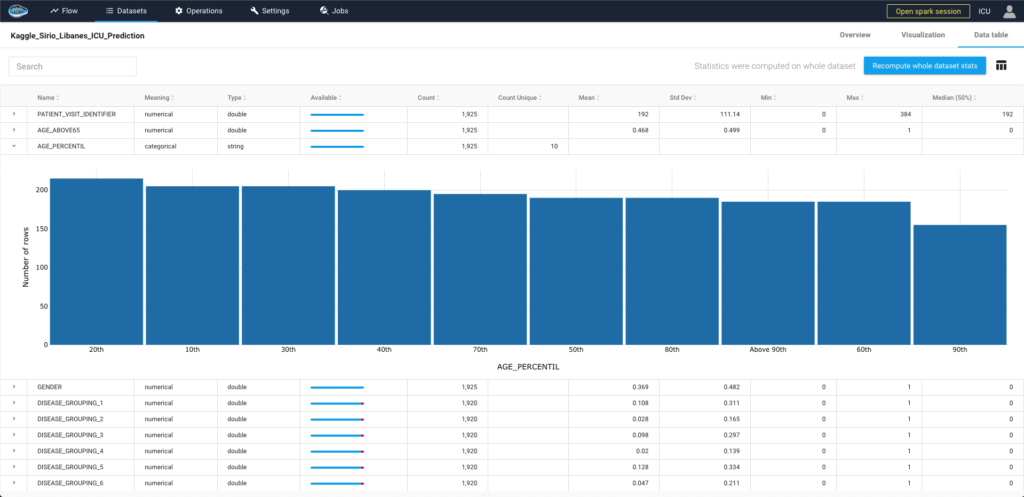
3 - Cleaning the Data
Going into cleaning step of the dataset, you can either use our cleaning module for regular operations such as filling null values or the Python script for more complex operations to preprocess your data and get it ready for the model training.
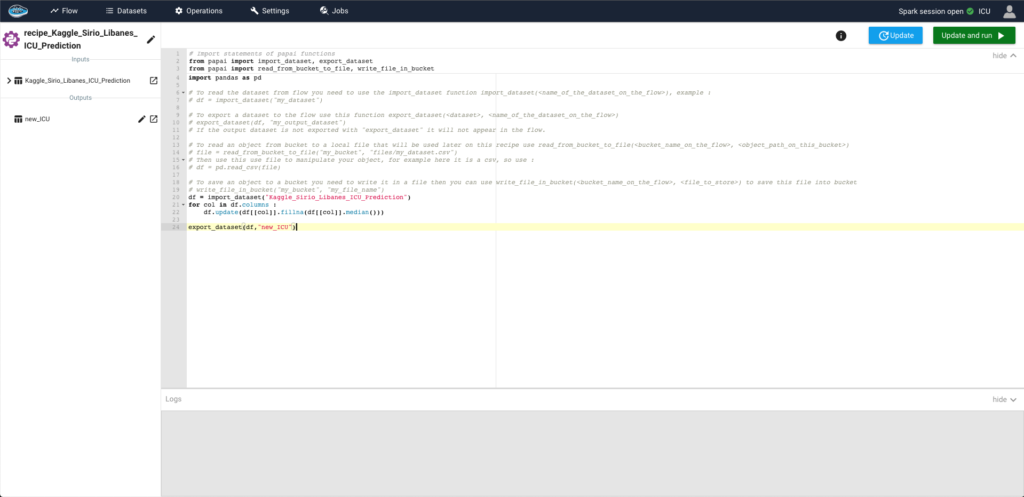
4 - Training the Data
Following the cleaning step, your dataset is ready for training any ML model. Thanks to our AutoML module, you can simply create multiple experiments of models from built-in modulable ML algorithms and through simple clicks. You can build your own pipeline to create the best model possible with no-code capabilities, which is useful for practicians or non data experts.
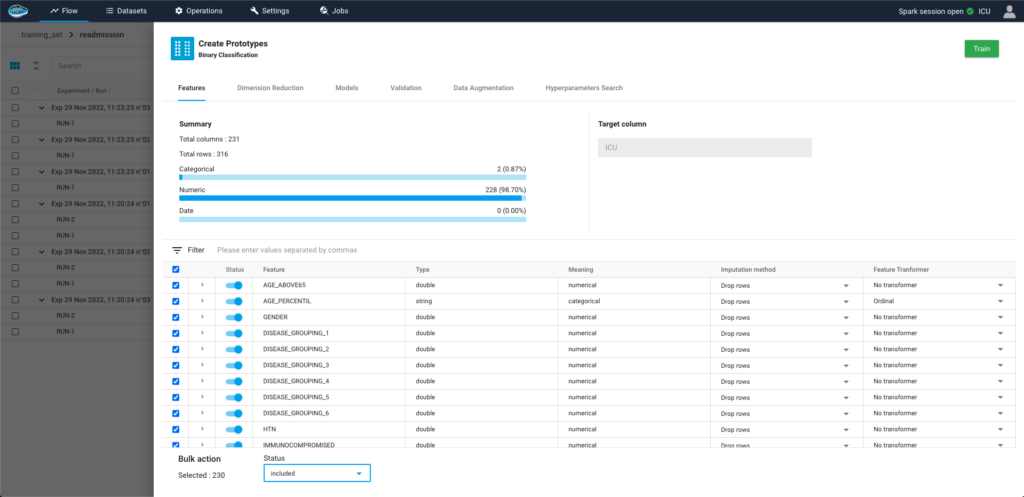
5 - Analyse and understand the model
In order to assess the quality of the trained model, papAI integrates an explainability module for each experiment created to be able to evaluate how much the model’s prediction is accurate and if it’s able to predict both classes. In our case: if a patient needs an admission in ICU or not. To get more in-depth with the decision making of that same model, papAI introduces an interpretability module to analyse how each feature weights on the prediction made by the model and how the variation of the feature value impacts on the target probability. This allows users to understand clearly the behind-the-scenes and thus eliminate the black box effect of these models.
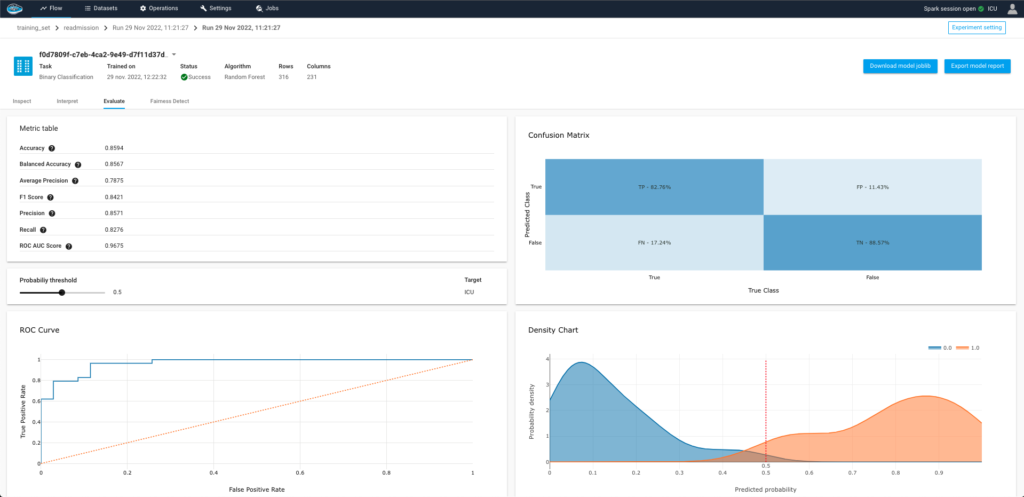
6 - Predict on the testing set
When the best suited model is chosen, you can apply it on a testing set to predict the outcome of admitting a patient or not to the ICU. You can also explore the influence of each feature on the prediction on an individual level and create “what-if” cases to assess the risk factors for each patient.
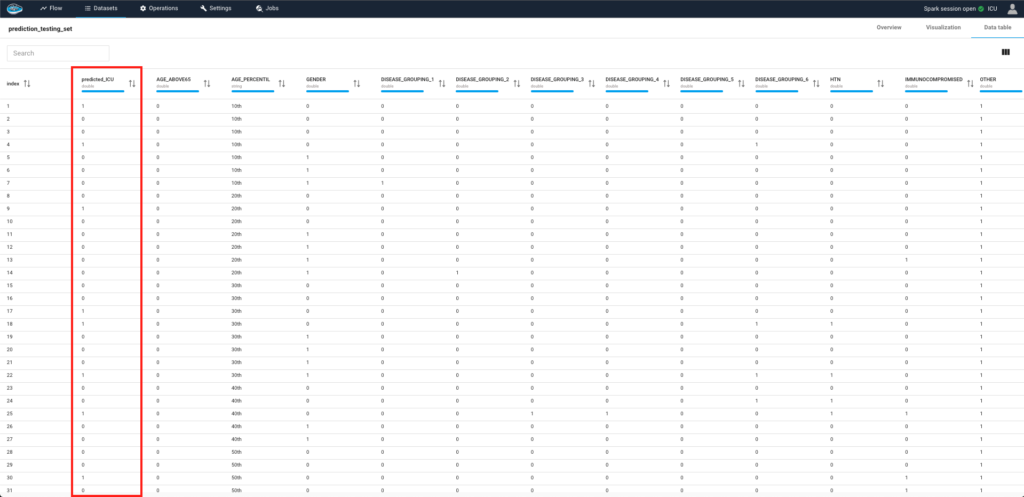
In an evolving healthcare environment, where staffing shortages are pushing physicians to practice at an increasing rate, we can help them to make quicker and more informed decisions on complex cases by providing guidance from a vast array of data and algorithms. This can improve patient care, reduce errors and save time for doctors who have to work on several cases at once, especially in emergency situations.
Finally we can see that papAI helps reduce mental workload and contribute to a healthy work environment while giving hospitals the ability to reply to the challenges of healthcare, in standard or exceptional situations, like pandemics or the growing population of polypathological patients.
Interested in discovering papAI ?
Our commercial team is at your disposal for any question
How AI Transforms Predictive Maintenance in Defense Equipment
How AI Transforms Predictive Maintenance in Defense Equipment In a...
Read MoreHow to Scale AI Without Breaking Your Infrastructure in 2025
How to Scale AI Without Breaking Your Infrastructure in 2025...
Read More
